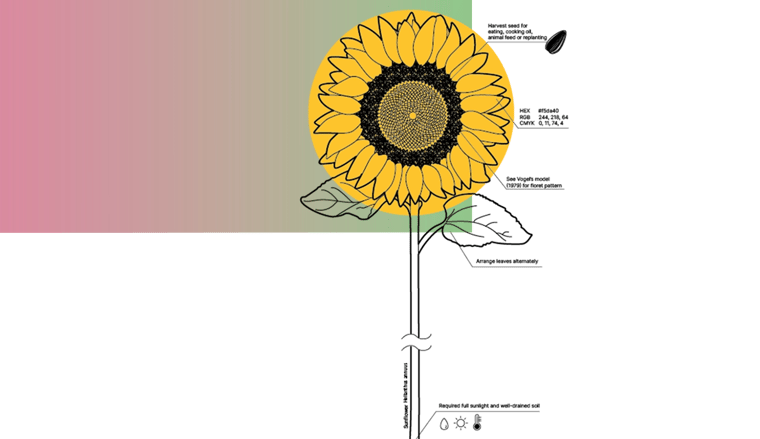
Innovating using the circular design principle - is the only road to a sustainable future
January 2024
by the 42T Sustainability Team
Circular design is rapidly becoming a vital innovation approach in sustainability, as evidenced by the increasing awareness and regulatory pressures pushing for eco-friendly product designs. We are passionate when it comes to innovating eco-conscious product and packaging designs, helping shift from a linear ‘cradle-to-grave’ model to one that embraces the circular economy. This approach not only minimises environmental impact but also challenges throwaway culture, aligning with emerging consumer awareness and regulatory pressures.
The push towards a circular economy is reinforced by initiatives like the Ellen MacArthur Foundation, which educates businesses and consumers on how to reduce waste and pollution from products. This initiative also promotes the regeneration of natural systems, aiming to create an economy that benefits both businesses and the environment. Consumer awareness, coupled with new regulatory landscapes, is influencing the shift towards sustainable packaging solutions, which highlights the urgent need for businesses to adapt to this evolving demand.
This shift is not just a response to regulatory pressures; it represents a profound change in how we value and interact with the products we use, marking a significant step towards a more sustainable future.
Circular design principles, focusing on the entire lifecycle of products, are pivotal in transitioning to sustainable business practices. This approach is not just an environmental strategy but also a significant business opportunity, potentially unlocking a trillion-dollar market. This transformative approach involves reimagining the way products are designed, used, and recycled, encouraging a shift away from the traditional ‘make-use-dispose’ model to one that values longevity, reuse, and regeneration. To thrive within this landscape, businesses must innovate solutions that deliver long-lasting value for consumers and the environment within the circular economy.

The transition to circular design in product development is grounded in a holistic framework encompassing four key aspects of sustainable design: people, profit, planet, and purpose. This framework sets the stage for the following key considerations:
Responsible design
This involves significantly reducing the material used in products, not just in quantity but also in terms of environmental impact. It also means rethinking products to minimise waste, such as creating biodegradable cutlery and moving back to more reusable approaches as an alternative to disposable plastic cutlery. Materials will continue to be chosen based on their carbon footprint and the energy consumed in their production and disposal.
Designing for repairability
Products should be designed for easy repair by consumers or technicians to extend product usable life. This includes using standard, easily removable fasteners, providing clear disassembly instructions, and incorporating modular design elements to facilitate part replacements and upgrades.
Using sustainable materials
Switching from single-use plastics to biodegradable materials is crucial. Additionally, using Post-consumer Recycled (PCR) and Post-industrial Recycled (PIR) plastics in product designs helps reduce the reliance on virgin materials and lowers the environmental footprint of products.
Rethinking the product model
This entails designing products with their end-of-life in mind. Can it be easily broken down into recyclable materials, biodegraded safely, or repurposed into something else entirely? Embracing models like reuse, refill, recycle, and remake present viable alternatives to the traditional approach of disposing of products in landfills or by incineration.
This forward-thinking approach is essential for businesses to thrive in an increasingly eco-conscious market and align with global sustainability objectives.
Innovative circular design practices are increasingly proving their worth, both in environmental impact and business profitability. For example, the transition towards using mycelium for biodegradable packaging represents a shift to materials that decompose naturally, aligning with environmental goals. Similarly, Patagonia’s approach to offering repair and refurbishment services has not only extended the life cycle of its products but also enhanced its business growth and brand reputation.
Moreover, advancements like waste stream sorting automation and incentivised reuse systems, are paving the way for more efficient and sustainable product life cycles. Dutch-based appliance provider, Bundles, is attempting to solve the high turnover of products by offering rental subscriptions on a pay-per-use basis. Applying Internet of Things technology enables product monitoring, while maintenance and refurbishment of higher quality machines preserve the product integrity for multiple cycles.
The business case for such sustainable practices is robust, as environmentally conscious strategies can significantly bolster a company’s reputation and financial standing. Transforming 20% of plastic packaging into reusable models presents a USD 10 billion opportunity, crucial for combating plastic waste and pollution. Given that 80% of a product’s environmental impacts can be determined at the design phase, the detrimental effects of overlooking or disregarding circularity are largely avoidable.
Circular design is not just an environmental strategy; it’s a comprehensive business approach. It enables companies to meet upcoming regulations, achieve sustainability goals, and remain competitive. By embracing circular design with our philosophy, we are able to move decisively towards a sustainable, profitable, and environmentally friendly future.
Was this trend article useful? Have a challenge of your own?
Email answers@42technology.com or give us a call on +44 (0)1480 302700.
Share this article:
Related Articles

Consumer, Sustainability
The refillable revolution - the sustainable future of grocery shopping

Sustainability, Industrial
The surge in the global Blue Economy - what role for deep tech?

Sustainability, Industrial
The hydrogen economy - solving difficult challenges towards energy transition

What will you ask us today?
We believe in asking the right questions to drive innovation; when we know the right questions, we generate the ideas to answer them.





